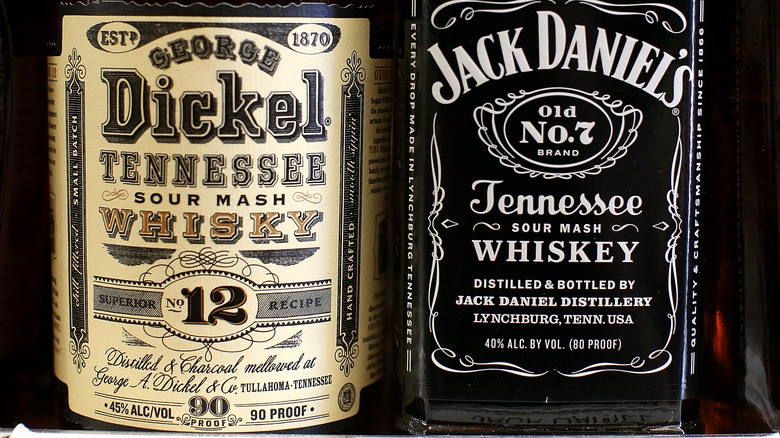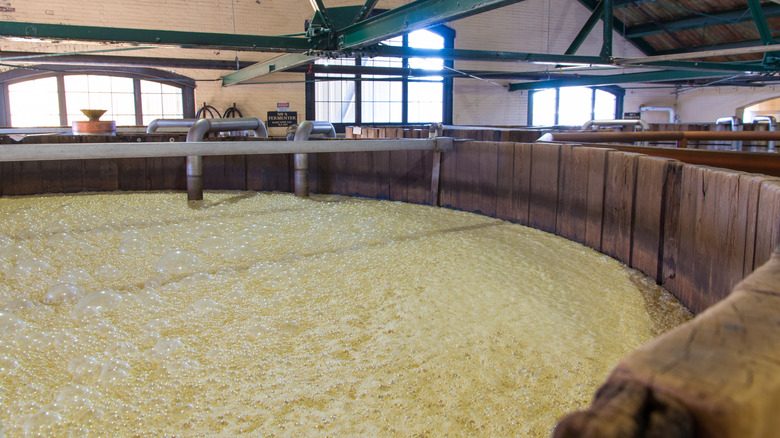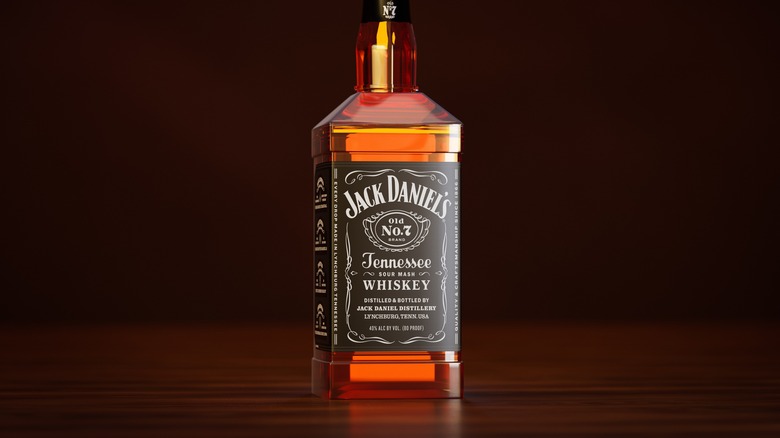What Does It Mean When Whiskey Is Labeled Sour Mash?
Jack Daniel's famously labels its Old No. 7 bottles as "Tennessee Sour Mash Whiskey," and that description is accurate. The whiskeys are made in Tennessee, and they are made using the sour mash process — a descriptor that simply means the whiskey maker has taken a percentage of fermented yeast, grain, and water from the last batch, and used it as a starter for the new one.
The sour mash process is similar to what bread makers do when they use a starter for sourdough — in fact, virtually every bourbon maker uses a sour mash process. But while any whiskey made in America that uses a mash bill (or recipe) with more than 51% corn, is aged in charred new oak barrels, and meets various proof strength requirements qualifies as "bourbon," bourbon makers aren't strictly required to use a sour mash. The alternative would be a sweet mash, using fresh ingredients. Most American whiskey distillers prefer using a sour mash, however, because it promotes continuity in terms of flavor from batch to batch. It also helps keep the mash's pH from fluctuating, which inhibits the growth of harmful bacteria.
The difference between sweet mash and sour mash
The sweet mash process is every bit as traditional as the sour mash one, but because of the higher possibility of bacterial contamination — particularly in the 19th century, when sour mashing became popular — and the lack of flavor continuity, it has become less common in American whiskey making. However, there are still some whiskey makers who use this process. For example, Wilderness Trail Distillery in Kentucky makes its bourbon and rye whiskeys in this manner.
That said, sour mashing is much more prevalent. The amount of spent mash (or backset, as it is sometimes called) added to the new batch can vary from distiller to distiller, but the average is estimated to be around 25%. So it's often a significant percentage, and yes, it does change the flavor profile of a whiskey, just not in the way you might think. In other words, there is no sour taste.
Dr. James C. Crow is credited with popularizing the sour mash technique in the 1830s, and it's been the standard in the bourbon world ever since. However, not many American whiskeys outside of Jack Daniel's reference this fact on their label.
Why do only some whiskey makers put sour mash on the label?
So why did Jack Daniel's choose this descriptor over straight bourbon whiskey for its Old No. 7, a label to which it's entitled thanks to its aging requirements? Because Tennessee-based distillers do things a little differently than other regional whiskey makers, particularly bourbon distillers in neighboring Kentucky.
The Lincoln County Process is a good example. Charcoal filtering, using charcoal chips made from sugar maple trees, is a staple element of the Tennessee whiskey style, and has been since the 19th century. This process is noted for its mellowing qualities, and Tennessee-made whiskeys by distillers like George Dickel and Jack Daniel's all use it. The latter, for instance, even notes that it filters its whiskey through 10 feet of charcoal.
Some Kentucky bourbon distillers do charcoal filter their whiskeys, but it's not a requirement. In Tennessee, charcoal filtering via the Lincoln County Process is a legal requirement. Putting sour mash on the label is not, but Tennessee whiskey makers like George Dickel and Nelson's Green Brier also do it, a choice that can likely be attributed to a combination of tradition, legal requirements, and individual distillery practices.



